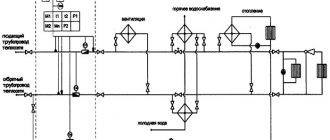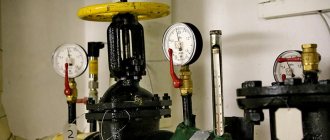What merges
All wastewater collected by the drainage system in populated areas differs in the type of pollution and origin. There are drains:
- household (household or fecal);
- production (technical);
- atmospheric (after melting snow, rain).
The first type of wastewater is water from sinks and washbasins, from taps and toilets, from showers, baths and laundries. This stream mixes both relatively clean liquid and water contaminated with physiological products of human activity (feces). Such wastewater contains organic (plant and animal origin) and mineral impurities:
- biologically significant elements (nitrogen, sulfur, phosphorus, carbon);
- pathogenic biological agents (microbes, bacteria);
- inert substances (particles of soil, sand, clay, acid, salt and alkali).
Because of this composition, domestic wastewater is considered the most polluted.
Industrial wastewater is varied in composition and impurity content; it contains production losses and waste, remnants of raw materials and reagents. Polluted industrial waters are:
- inert;
- unstable;
- toxic.
The wastewater transported by the industrial wastewater system contains the following contaminants:
- mineral (they most often comply with the standards for release into the reservoir, so they do not undergo additional processing);
- organic (they are processed in treatment facilities);
- mixed.
Mixed industrial wastewater is discharged into the system on a general basis, if it does not contain:
- impurities that can clog pipes or form deposits on their walls (cotton wool, gypsum, scale, fibers);
- substances that have a destructive effect on the material of pipelines and sewerage structures;
- flammable and gaseous additives, which can cause an explosion in drainage networks.
An important requirement for industrial wastewater discharged into the city treatment system: its temperature should not exceed 40C.
Water enters the drainage complex after rain falls, snow melts, and street watering occurs. Such streams are often contaminated with impurities from industrial enterprises, therefore, from certain areas, atmospheric wastewater is treated in the same way as industrial wastewater. Relatively clean wastewater is removed from the streets through special drainage networks.
Purpose of drainage and types of wastewater
All topics in this section:
Postnova E.V. Water disposal.
Part P: Educational materials. – St. Petersburg: PGUPS, 2008. – 48 p. Bibliography: 8 titles. Il. 32. App. 1. Basic information about systems and structures is provided. Drainage systems Depending on the terrain, climate, capacity of the reservoir, improvement of the facility and other factors, the following drainage systems are used: complete separate, incomplete separate, public
Drainage schemes Depending on the adopted drainage system and the terrain, the following schemes for drawing drainage collectors are used: perpendicular, crossed, parallel, zone and radial
Basic elements of water disposal The water disposal system includes wastewater receivers, intra-house, intra-block, street networks, wells, pumping stations, river and road crossings, treatment facilities, you
Pipes for constructing a drainage network The pipe materials used for constructing a drainage network must have sufficient strength, water resistance, resistance to corrosion and abrasion, and have a smooth interior.
Sewage wells Sewage wells for various purposes are installed on drainage networks. For monitoring the operation of drainage networks, as well as for cleaning and rinsing them,
Crossings under railways and highways Crossings under railways and highways must ensure the safety of traffic. In the event of an accident with a pipeline, the roadbed must be protected from erosion by water, and the pipeline itself
Standard data for designing a sewerage network In [4], data for designing a sewerage network are standardized: dimensions of pipes and channels, fluid flow rates in them, slopes and depths. Naim
Water disposal standards and unevenness coefficients The water disposal standard refers to the volume of wastewater discharged from one person or from a unit of production of an industrial enterprise. For domestic waste
Estimated wastewater flows Estimated costs mean wastewater flows, which are used to determine the main dimensions of wastewater disposal facilities. Average daily consumption
Tracing the sewerage network Tracing the sewerage network during its design means drawing the axes of sewer pipes on the plan of the object (settlement or industrial
Construction of a sewerage pumping station A pumping station for pumping wastewater (Fig. 15) consists of a receiving tank 8 with a grid 2, an engine room 4, in which pumping units 6 are located (pump
Pumps for pumping wastewater Sewage pumping stations are mainly equipped with centrifugal vertical or horizontal pumps [6]. Pumps for pumping wastewater and sludge are structurally different
Composition and properties of wastewater Wastewater entering the sewer contains various contaminants. Based on their origin, these contaminants are divided into mineral, organic and bacterial. Mineral
Conditions for discharging wastewater into reservoirs Wastewater entering the sewer system is in most cases discharged into reservoirs. Discharge of polluted wastewater leads to disruption of the natural regime of water bodies and deterioration of water quality.
Methods for treating household wastewater Treatment of household wastewater is carried out using mechanical, biological and bacteriological methods. Each of these methods removes certain types of contaminants from wastewater.
Facilities for mechanical wastewater treatment For mechanical wastewater treatment, grates, sieves, sand traps, settling tanks, and filters of various types are used [2]. Grids and sieves are used when filtering wastewater for
Facilities for biological wastewater treatment Biological treatment is used to remove the bulk of colloidal and dissolved impurities of organic origin from wastewater. Biological treatment can
Facilities for treatment and dewatering of sewage sludge When wastewater settles in structures, a large amount of sludge is formed. The sediment consists of solids and water and is called "raw". In the solid phase of domestic sludge
Facilities for disinfecting wastewater and releasing it into water bodies Disinfection (disinfection) of wastewater is carried out with the aim of destroying the pathogenic (pathogenic) bacteria contained in it and thus protecting water bodies from contamination. Disinfection
Operation of sewerage treatment facilities Upon completion of construction, sewerage treatment facilities are accepted into operation by a special State Commission with the participation of a representative of the State Sanitary Inspection.
Treatment of industrial wastewater from enterprises of railway stations. In railway transport there is a large number of locomotive and carriage depots, repair plants, washing and steaming stations and other enterprises where production
Drainage. Part P 1. Purpose of drainage and types of wastewater. 2. Drainage systems. Types and purpose. 3. Drainage schemes. 4. Basic elements of drainage. 5. Pipes
What types of systems are there?
Drainage systems differ in their operating principles. Stand out:
- All-alloy.
- Completely separate.
- Incomplete separate.
- Semi-separated.
- Combined.
All water - domestic, industrial, atmospheric - is discharged through the general alloy network. The wastewater is sent through the pipeline to treatment facilities, but in case of heavy rainfall from the main collector, part of it (a mixture of atmospheric and sewage) is discharged into reservoirs without treatment through special storm drains. This system has one significant advantage: it is a short-length pipeline, its installation and maintenance require minimal costs, and the operating requirements are simple.
Also, the all-alloy system is equipped with large-diameter pipes with a reserve volume to allow a significant volume of water to pass through. Disadvantage: frequent clogging of pipes in dry months, pollution of water bodies due to the release of mixed rain, domestic and industrial water into them, danger of flooding with sewage in the lower levels of buildings during periods of heavy rainfall.
In a complete separate system, water flows are usually transported through two networks: separately - domestic and industrial, separately - rain. In cases where industrial wastewater requires several treatment methods, which makes it impossible to connect it with fecal wastewater, the system includes a larger number of networks.
With separate disposal, atmospheric water is most often discharged into reservoirs without treatment. Disadvantage: considerable length with the need to use a large number of pipes, as well as the complexity of their operation.
In an incomplete separate configuration, there is only one network for transporting wastewater and wastewater to wastewater treatment plants. Transportation of wastewater after precipitation directly into the reservoir is carried out through ditches, open trays and ditches.
For a semi-separate drainage system, two networks are provided: one for domestic (domestic-fecal) and industrial wastewater, and one for rainwater (atmospheric). In areas where these networks intersect, separation chambers are located.
If there are few rain streams, they are mixed with household waste and sent to treatment plants. Abundant atmospheric water is mostly transported directly to reservoirs, although a certain percentage (liquids concentrated at the bottom of pipelines) also flows into sewers for treatment.
In the semi-separate complex, economic and domestic wastewater, as well as the most polluted rainwater from the bottom stream, are treated. This configuration copes well with protecting reservoirs from pollution. The disadvantage is the high cost of treatment facilities and significant operating costs.
The presence of a combined complex is justified in large populated areas, where some areas may have a general rafting network, others - an incomplete one, and still others - a completely separate one. In such cases, part of the drainage works with common wastewater, and part with separate networks.
Operating principle and design of the wastewater disposal system
Drainage systems provide comprehensive drainage of rainwater from all parts of the site where there is a need for it (near the house, outbuildings, from paths).
and the design of the drainage system, a huge number of factors are taken into account, including the surface features of the site (soil and topography), the depth of surface water, the number of floors of the building, the number of cars constantly located near the house, and the presence of major highways in close proximity to the house, as well as the possibility of combining storm and surface drainage systems.
Based on all these factors and special formulas, the maximum possible load that the surface drainage system can withstand is calculated. The drainage system works as follows: water from the roof through the drain flows down to the surface drainage system, with which it enters the deep (underground) drainage system and through pipes in the ground goes directly to the sewer well. Sometimes the drainage system also includes groundwater drainage, which is necessary if the site is located in a low-lying area, in a constantly flooded place and if the house has a basement or underground garage.
Roof drainage combats the negative effects of snow and rainwater, and also prevents the appearance of water on the surface of the ground, which occurs after heavy rainfalls and during the spring melting of snow. The appearance of water on the surface of the earth can be a very serious problem if you have a leaky sewer or septic tank, which will fill with this water in a matter of hours.




